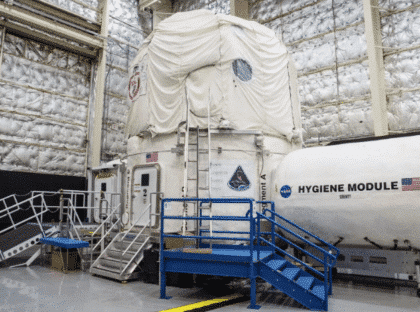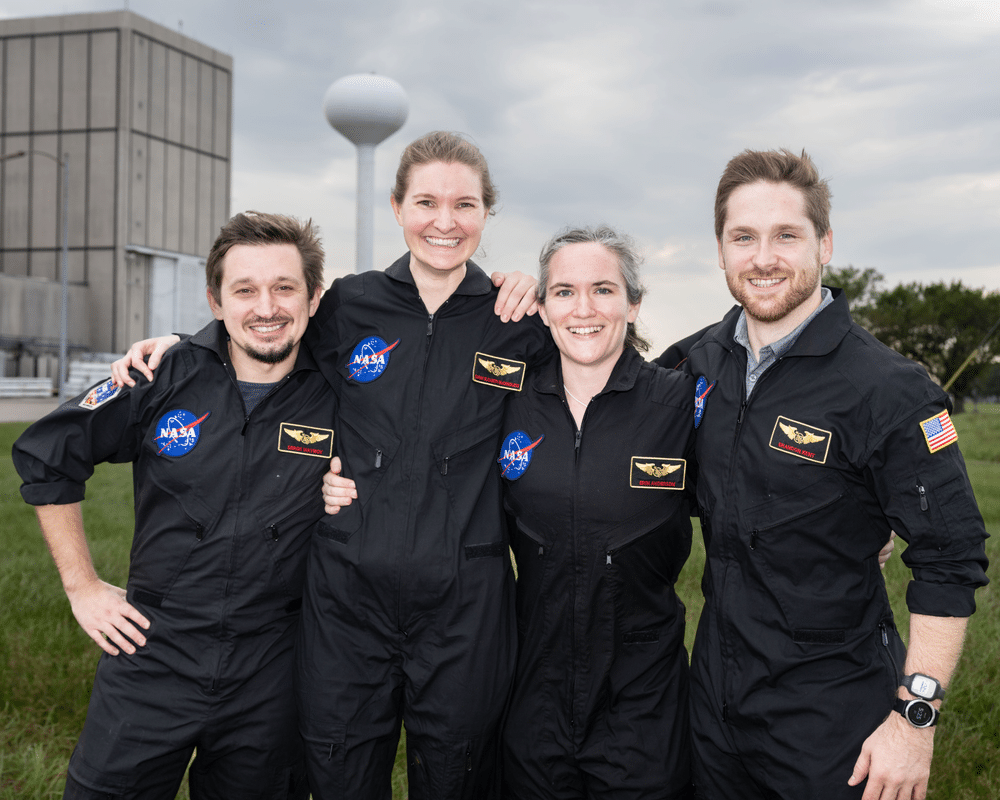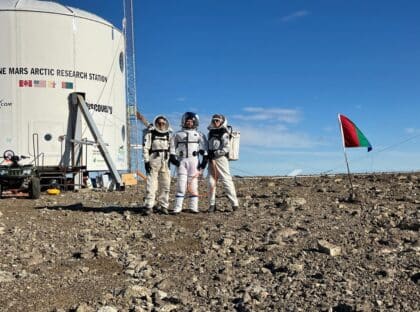
The Mars Society is proud to announce that Sergii Iakymov, Director of the Mars Desert Research Station (MDRS), has successfully completed a 45-day NASA simulated Mars mission at the HERA (Human Exploration Research Analog) facility, located at the Johnson Space Center in Houston. The mission, which ran from August 9 to September 23, is a vital part of NASA’s efforts to better understand the physical and psychological challenges astronauts may face during long-duration space missions.
Sergii was selected alongside three other research volunteers—Erin Anderson, Brandon Kent, and Sarah Elizabeth McCandless—to participate in this intensive simulation. Over the course of the mission, the crew lived inside a 650-square-foot habitat, mimicking the isolation, confinement, and operational demands that astronauts will encounter on real Mars missions. The mission culminated in a simulated “return” to Earth on September 23, 2024.

During the mission, Sergii and his crew performed a range of science and operational tasks. These included harvesting plants from a hydroponic garden, growing shrimp, and deploying a small CubeSat to simulate gathering virtual data for analysis. The crew also “walked” on the surface of Mars using virtual reality goggles and flew simulated drones over Martian terrain. These tasks helped to immerse the crew in the realities of space exploration, while allowing NASA scientists to monitor their behavior and performance in these high-pressure, isolated conditions.
One of the key challenges of the mission was simulating the communication delays astronauts will experience when traveling to Mars. As the crew “approached” Mars, they encountered increasingly longer delays in communication with Mission Control, eventually reaching five-minute lags. This aspect of the mission was designed to test how well the crew could develop autonomous workflows and make decisions independently from ground control, a critical skill for future Mars missions.
NASA’s Human Research Program conducted 18 human health experiments during this mission to explore how isolation, confinement, and remote conditions impact crew members’ mental and physical health. Sergii, along with the other crew members, played a crucial role in helping NASA gather data on these factors, which will be instrumental in preparing astronauts for deep space missions.
This HERA mission marks the third of four such simulations in 2024, with Sergii’s team following in the footsteps of previous crews who completed similar missions earlier in the year. HERA missions provide invaluable data on how human crews might handle the complex challenges of long-duration space exploration, particularly on Mars.
Sergii’s leadership as Director of the Mars Desert Research Station has uniquely positioned him for this mission, and his participation highlights his ongoing commitment to advancing humanity’s understanding of life on Mars. His experience and insights from this mission will undoubtedly contribute to the ongoing research and development efforts at MDRS and the broader Mars exploration community.
The Mars Society congratulates Sergii and his crew on their successful mission and extends our deepest thanks to NASA’s HERA operations team for their continued dedication to advancing human space exploration. We look forward to applying the lessons learned from this mission to future analog and Mars-related research.
Image: 1): HERA analog facility, 2) Sergii (left) and HERA crew


